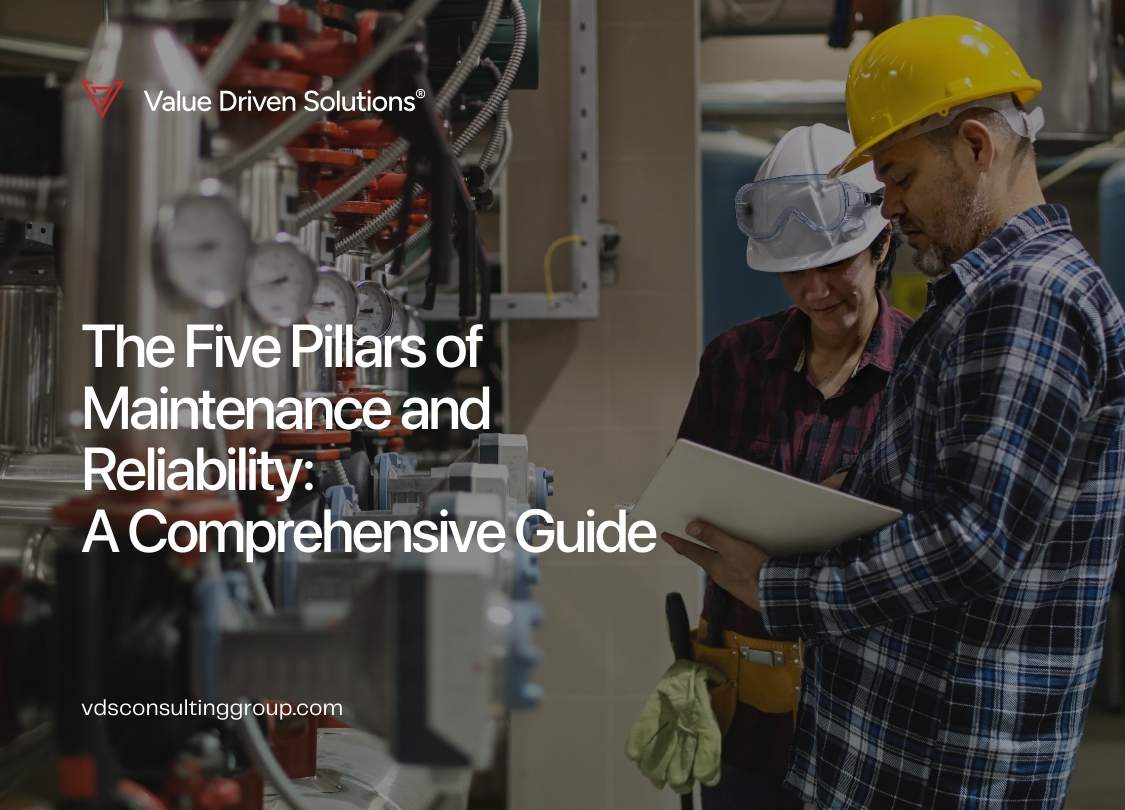
Introduction
A well-maintained facility enhances equipment reliability, reduces accident risks, and improves productivity. Proactive maintenance is essential for ensuring equipment functions correctly and safety systems operate as intended.
The five pillars of maintenance and reliability provide a structured framework for facility managers. These pillars include:
- Business and Management
- Manufacturing Process Reliability
- Equipment Reliability
- Organization and Leadership
- Work Management
Below, we explore each pillar in detail and discuss how reliability-centered maintenance benefits your workforce.
Pillar One: Business and Management
This pillar focuses on aligning maintenance and reliability goals with broader business objectives. For example, if a company aims to be the leading supplier of durable medical equipment in the Midwest, its maintenance goals should prioritize near 100% uptime to meet high production demands.
By integrating maintenance strategies with business goals, organizations can optimize performance, reduce costs, and maintain a competitive edge.
Pillar Two: Manufacturing Process Reliability
This pillar connects maintenance activities with improving manufacturing efficiency. If a production line relies on complex machinery, maintenance efforts should ensure those machines remain operational to maximize uptime.
Key strategies include:
- Regular equipment inspections
- Predictive maintenance to prevent unexpected failures
- Process optimization to minimize bottlenecks
A reliable manufacturing process enhances productivity and reduces waste.
Pillar Three: Equipment Reliability
This pillar involves two key actions:
- Assessing Equipment Capabilities – Evaluating the performance and limitations of machinery.
- Prioritizing Maintenance Activities – Focusing on tasks that yield the highest return on investment.
Critical processes should be prioritized to ensure maximum efficiency and safety. Implementing condition monitoring and preventive maintenance helps extend equipment lifespan and reduce costly breakdowns.
Pillar Four: Organization and Leadership
Effective leadership is crucial for achieving maintenance and reliability goals. This pillar emphasizes:
- Training and professional development for maintenance teams
- Managing budgets for skill enhancement
- Encouraging participation in industry conferences
A well-trained workforce improves maintenance efficiency and fosters a culture of continuous improvement.
Pillar Five: Work Management
The final pillar focuses on execution, including:
- Scheduling and planning maintenance tasks
- Conducting quality checks
- Managing inventory and spare parts
Using a Computerized Maintenance Management System (CMMS) can streamline work orders, data analysis, and task prioritization, ensuring maintenance goals are met efficiently.
4 Ways Reliability Benefits Your Maintenance Workforce
While reliability-centered maintenance (RCM) is often associated with cost savings and productivity, it also significantly impacts your workforce. Here’s how:
- Boosts Technician Confidence and Wrench Time
Frequent equipment failures create stress and distractions for maintenance teams. When machinery is well-maintained, technicians can work confidently, increasing productivity and reducing downtime.
- Encourages Professional Growth
Reliable equipment frees up time for cross-training and skill development. A well-trained team becomes more versatile, reducing reliance on specialized contractors and improving operational agility.
- Reduces Injury Risks
Poorly maintained equipment increases safety hazards. Proper maintenance minimizes risks such as exposed moving parts, chemical spills, and slip hazards. Documented repair procedures further enhance workplace safety.
- Improves Morale and Retention
Constant reactive maintenance leads to burnout and low morale. A proactive maintenance program fosters a positive work environment, increasing employee satisfaction and retention.
Conclusion: Reliability-Centered Maintenance Benefits People and Profits
While reliability-centered maintenance enhances equipment performance and profitability, its greatest impact may be on your workforce. By reducing injuries, boosting morale, and enabling professional growth, RCM strengthens your most valuable asset, your employees.
Is your business struggling with equipment downtime or reactive maintenance?
VDS Consulting Group offers expert Employee Training & Development Seminars to help you implement a proactive maintenance strategy.
📞 Call us today at 772-722-8811 for a FREE consultation and take the first step toward improving reliability, safety, and workforce efficiency.
🔗 Learn more: Employee Training & Development Seminars
Invest in reliability today and empower your team for long-term success!